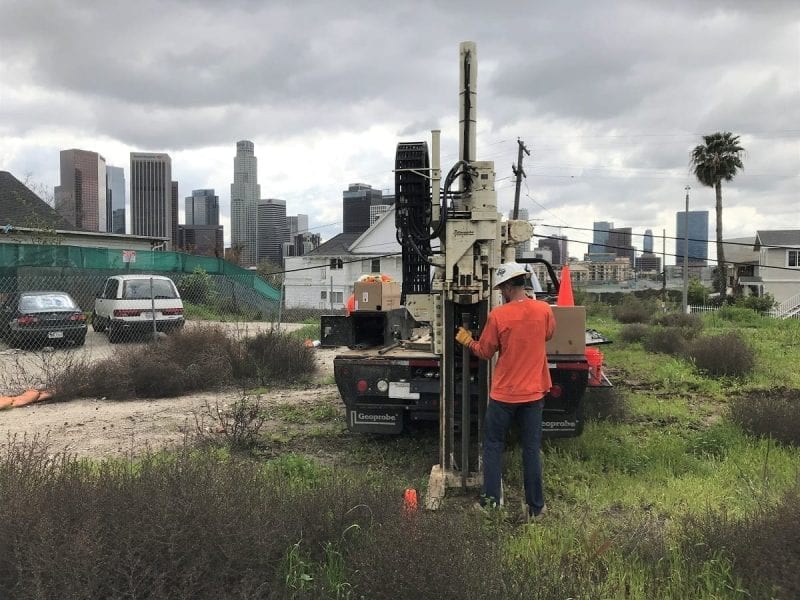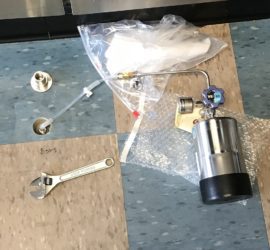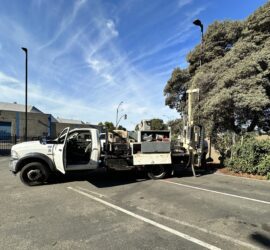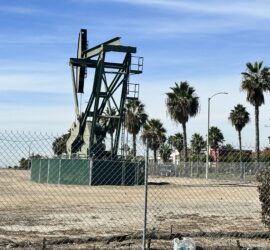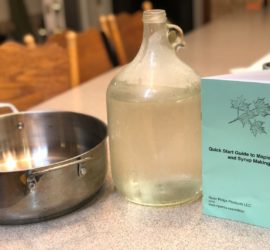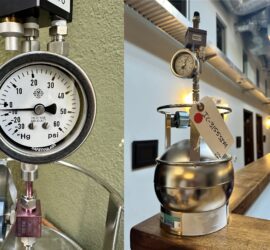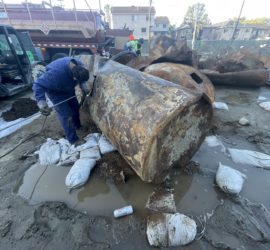Methane Testing Report and Soil Gas Survey
Methane testing is a professional environmental service that investigates the upward migration of methane soil gas into buildings, to assess the potential risk of combustion and overall human health. A methane test is typically necessary to meet the standards of local building departments, public works agencies, health departments, and regional environmental protection agencies. The methane testing process entails drilling, vapor probe installation, soil gas sampling, laboratory analysis, and a “Certificate of Compliance” stamped by a professional geologist. In essence, a methane test is a soil vapor intrusion study with an emphasis on combustible natural gas hydrocarbons. The overall objective is to establish safety design parameters for a vapor intrusion mitigation system (VIMS) in future buildings. Updated April 9, 2024.
Methane Testing Requirement
The requirement for methane testing exists when landowners plan to build a structure on a lot that’s within methane hazard zoning areas. This is necessary because building departments are initially unsure exactly how high methane gas concentrations can be under any given lot. As a result, they’ll require the highest level methane mitigation system by default. However, if data from a certified methane testing report indicates lower levels of the combustible gas, building departments will then reduce the mitigation criteria for appropriate health and safety measures and less costly construction requirements.
About Methane Soil Gas & Methane Testing Standards
Methane soil gas is flammable, colorless, and odorless. Methane has a chemical formula of “CH4” and is highly explosive. Due to its chemical composition and physical reaction properties, the gas is not detectable by a photo-ionization detector (PID), but rather by a flame ionization detector (FID). The primary concern about methane soil gas with building departments is the potential explosiveness within living spaces. Secondarily, there are concerns about CH4 being a simple asphyxiant. Scientists understand that asphyxiation hazards occur due to the displacement of oxygen in the indoor air. And there are other physiologic effects that occur when oxygen levels are displaced in breathing zones.
The Oil Fields & Methane Soil Gas
Southern California’s oil boom began in 1892 when petroleum prospector Edward Doheney determined that natural pools of crude oil were buried beneath the City’s active tar pits. As a result, California quickly became the third-largest oil-producing state in the nation. The abundance of oil wells remained part of the local landscape for decades. And some of the less conspicuous oil pumps still operate in the Los Angeles basin today. Even after one hundred years of pumping, Los Angeles’s oil fields have not been exhausted.
As of 2020, petroleum production is still prominent, because crude oil is still a worldwide primary energy source. The second-largest energy source in the United States is natural gas. And the third is coal. In fact, according to the United States Energy Information Administration, the coal industry produced 21 quadrillion BTU in the year 2009. As a result of mining for crude oil, natural gas, and coal, explosive natural gas is abundant underground. Natural gas is about 90% methane in composition. Thus, local Building and Safety Departments institute methane soil gas testing criteria and mitigation standards for developments around production fields.
Petrogenic and Biogenic Methane Gas
The primary source of petrogenic methane gas hazards is fossil fuel reserves. For instance, petroleum pockets and naturally surfacing tar deposits produce an abundance of natural gas. The mining, drilling, and extraction process of these reserves further spread the extent of methane gas migration. In fact, production fields convert old oil wells into natural gas production wells for decades after they finish producing crude oil.
Secondarily, there are biogenic methane gas hazards that result from local landfilling facilities and marshlands. To illustrate, the microbial decomposition of organic matter underground produces high concentrations of landfill methane gas or marsh gases. In fact, landfill and marshland methane gas pockets typically exist at high-pressure levels.
Although the scope of methane testing is mostly continental, sub-oceanic environments can also contain large quantities of the gas. In fact, under the ocean, there are vast amounts of methane hydrates that naturally emit the gas from the subsurface.
Petroleum Gas Methane Testing
Petroleum is a complex combination of hydrocarbon compounds, nitrogen, oxygen, sulfur, and more. Heavier hydrocarbons are the semisolid and solid forms of petroleum, such as tar, coal, and more. Although liquid petroleum (crude oil) is commercially important, its production process also poses long-lasting environmental impacts. Especially in the form of petroleum gas (natural gas). Natural gas consists of lighter-end paraffin hydrocarbons, of which methane is the most abundant. Thus there is a necessity for methane testing within areas of historical petroleum production.
Subsurface Occurrences of Petroleum
Subsurface petroleum deposits occur in the form of oil and gas pools and fields. While a pool is a large body of natural gas or oil under one pressure system, a field is several pools within one larger geologic formation. A province is a large area comprising oil and gas pools and fields, which all relate to one geologic environment. Any of these subsurface petroleum occurrences produce an abundance of petrogenic methane gas migration hazards. Thus, development projects within fields and provinces generally require a methane test and mitigation plan.
Tar, Peat, & Coal in Methane Zones
Today, geologists understand that some Los Angeles Methane Zones may exist due to the tar-to-peat-to-coal process. Accordingly, methane testing requirements and mitigation standards apply.
Natural Gas from Surficial Tar & Petroleum Substances
Petroleum deposits, along with methane soil gas hazards, can exist near the ground surface too. For example, the La Brea Tarpits in Los Angeles, California is a natural occurrence of surficial tar by mode of seepages and springs. Actually, surficial tar seepage is prominent along the entire coast of California and is partially a result of the unique plate tectonic activity of the Coast Range and Transverse Range provinces. Similar oil springs have been apparent in various parts of California, New York, and Pennsylvania since the 1700s. As a result, the shallow geologic formations comprise petrogenic soil gas pockets and require a methane test for land development purposes.
Peat Methane Gas Testing
Peat is a natural substance that forms when decaying vegetation does not have enough oxygen. Geological studies about plant fossils indicate peat is primarily formed within freshwater swamps. The formation process also involves an abundance of petrogenic methane soil gas hazards to shallow soil. To illustrate, after the burial and chemical transformation processes, peat becomes lignite. And with more applications of time, pressure, and temperature increases, lignite becomes bituminous. As more of these depositional processes occur, the end result becomes anthracite coal.
Coalbed Methane Gas
An abundance of methane gas releases itself into the atmosphere during coal mining operations too. However, developers should understand that the primary concern for the methane testing standards is the gases that migrate underground. Most of the time, subsurface gas migration occurs radially upwards and outwards from the source. This typically occurs along with interconnected fractures or the walls of former oil wells. However, some methane soil gas remains within the original coal pocket source.
At the shallower depths, the explosive gas migrates from open fractures within coal beds, and through geologic contracts. And groundwater in coal beds can temporarily trap methane gas, or increase the rate of migration to shallow soils. Concerns with methane vapor migration also arise when the gas invades drinking water sources, such as wells or water lines.
Natural Gas Production Wells & Methane Gas
Accumulations of natural gas comprising methane and hydrogen sulfide can stem from oil fields and coal mines. A methane gas explosion in Los Angeles in 1985 occurred due to methane soil gas accumulations indoors. And this determination was a revolutionary event in the environmental engineering industry for hydrocarbon gas mitigation.
Methane is by far, the largest component of natural gas. It is an aqueous phase compound with four (4) hydrogen atoms and one (1) carbon atom. Thus, it is a hydrocarbon gas. Additionally, hydrogen sulfide exists within the conglomerate gas. Natural gas also comprises non-hydrocarbon components, such as nitrogen, oxygen, carbon dioxide, and more. However, these other components of natural gas are less threatening in terms of combustion. As a result, there are no testing criteria for these substances in the methane testing standards.
Drilling and Pumping Natural Gas
As the petrogenic gas from deeper geologic formations gets extracted by hydraulic fracturing (or fracking), the gas escapes the original formation. In this process, high-pressure drilling fluid is pumped into the formation to crack the rocks and create fractures. The new fracture voids provide a direct conduit for the natural gas to collect inside the well. Unfortunately, some of the gas also escapes the well. From there, it migrates into other geological formations that are above it. As a result, methane soil vapor intrusion risks happen in the shallow soils near oil fields. Consequently, there are laws and building codes that require meeting methane testing standards, as well as methane mitigation standards before building.
Methane Content of Natural Gas
Methane is the predominant chemical compound (by volume) of natural gas. Soil gas of any content and can migrate through geological formations, and into confining structures above ground. As a result, the gas accumulates inside buildings and can concentrate to combustible levels over time. Typically, this hazard is a consequence of historical oil drilling, natural crude oil surfacing, and landfill activities. With this in mind, a methane test determines the concentrations of in situ CH4 at a property. And consequently, a methane mitigation system helps eliminate the risk of combustion.
Hydrogen Sulfide Content in Natural Gas
Hydrogen sulfide is a product of the decomposition of sulfur-containing organic matter. This gas is easily identifiable by its initial “rotten egg” odor. Hydrogen sulfide has the chemical formula “H2S” and it is found in many of the same areas as methane. For example, landfills, swamplands, sewers, petroleum fields, and waste-water treatment facilities. One dangerous characteristic of H2S is that it can impact a person’s ability to detect its distinct odor and time. For instance, at high enough concentrations, persons within a room containing hydrogen sulfide may no longer be able to smell it after a short period.
The concern for explosion due to hydrogen sulfide is less than methane gas. Thus, the methane testing standards do not require geologists to report H2S concentrations. Although, overexposure to high levels of hydrogen sulfide can lead to respiratory failure and death by asphyxiation. Upon exposure, general symptoms include dizziness, nausea, and headaches. Per the Occupational Safety and Health Administration (OSHA) the permissible exposure limit (PEL) for H2S is 10 ppm. And this value bases itself on an 8-hour time-weight average.
The Science of Methane Gas Explosions
The term “Lower Explosive Limit” or “LEL” means the minimum concentration of gas in the air allowable for it to burn. This value is traditionally reported in percentage, by volume. If the methane-to-oxygen ratio is below the LEL, the mixture is too lean to burn. On the other hand, the “Upper Explosive Limit” or “UEL” means the maximum concentration of the subject gas in the air allowable for burning. If the methane-to-oxygen gas ratio is above the UEL, the mixture becomes too rich to ignite.
Methane gas has a lower explosive limit (LEL) of 5% and an upper explosive limit (UEL) of 15%. Thus, the range of concentrations between the LEL and UEL is the hazardous explosive range. Within this range, the methane-gas-to-other-air mixtures will allow for combustion to occur.
1985 Department Store Explosion Due to Methane Soil Gas
On March 24, 1985, an explosion took place in a department store located in the Wilshire-Fairfax District of Los Angeles. Numerous people were injured and hospitalized, and the streets were littered with debris and structural remains. Furthermore, the disaster blew out the windows and compromised the structural integrity of the store. A forensic investigation took place within the City of Los Angeles and the local fire departments. And scientists determined the explosion was the result of high-pressure methane soil gas which accumulated inside the department store from underground. The photos below demonstrate the extent of the March 24, 1985 department store explosion by cause of methane soil gas intrusion.
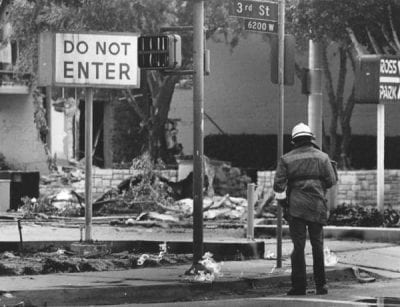
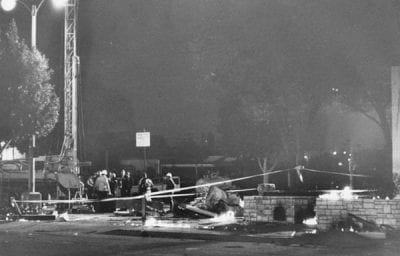
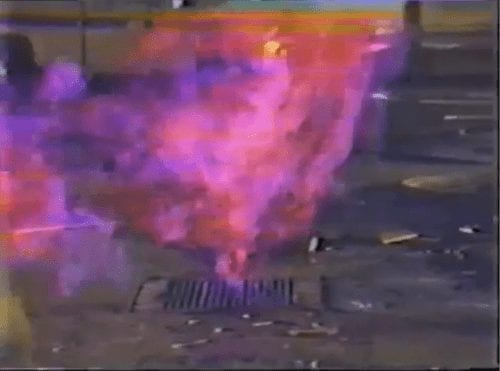
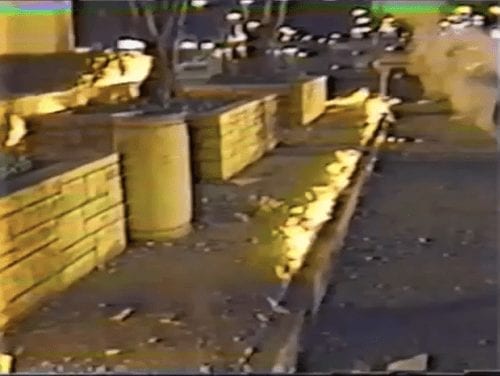
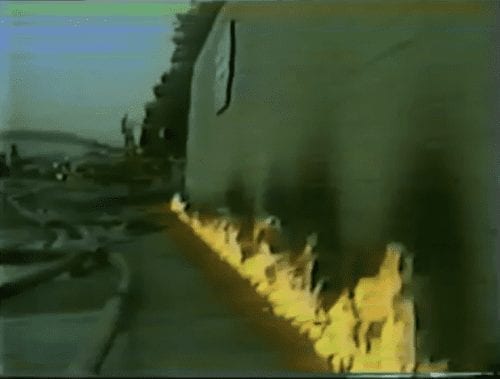
Purpose of a Methane Test
The purpose of methane testing is to determine site-specific methane gas concentrations underground so that future buildings can be safe from explosion hazards. Methane testing procedures are usually a prerequisite to the methane mitigation system design. Awareness of the hazards of combustible soil gas rose from a series of explosions in Los Angeles before the 1980s. Consequently, the Los Angeles Department of Building and Safety (LADBS) implements methane testing and mitigation requirements in special hazard zones. Similarly, other agencies, such as the County of Los Angeles, the County of Orange, the City of Huntington Beach, and more enforce LADBS codes in their methane test standards. Please Click Here to view the County of Los Angeles Building Code.
Following Methane Hazard Test Standards
Each building department follows a set of standards for building in methane hazard zones. The Methane testing standards are generally similar across the board and aim to control the quality of assessment. In fact, most methane soil test standards being enforced by other cities are based on the Los Angeles City Department of Building and Safety’s research and guidelines. Some agencies may require additional laboratory analysis if preliminary concentrations exceed 12,500 parts per million.
Other Building Departments also Follow the Methane Testing Los Angeles Standards
Most local and state agencies under the jurisdiction of the United States Environmental Protection Agency have departments that oversee methane soil gas issues. In fact, the growing concern for hazardous methane gas and other subsurface contamination is strengthening environmental policies, nationwide. For example, the Texas Commission for Environmental Quality (TCEQ) implements a Landfill Gas Management program comprising methane soil gas monitoring, reporting, and mitigation standards. Below, are some of the primary jurisdictions in California that require methane mitigation criteria similar to Los Angeles.
Huntington Beach Methane District Testing
The City of Huntington Beach oversees engineering projects within the “Huntington Beach Methane District.” The Huntington Beach Methane Overlay District is a portion of the city area that generally has high methane soil gas hazards. This area is determined hazardous, based on historical methane testing data and information from the Huntington Beach Oil Well Finder Database.
Some of the Huntington Beach methane gas occurrences are reportedly natural and are a result of decaying shallow surfacing crude oil. However, the history of this beach city entails numerous oil derricks erected along the shoreline of the city. As a result, the primary hazards are a reflection of the current and historical crude oil production wells. Consequently, the City of Huntington Beach enforces methane soil testing and methane mitigation plan review for all proposed projects within the “Huntington Beach Methane Overlay District.”
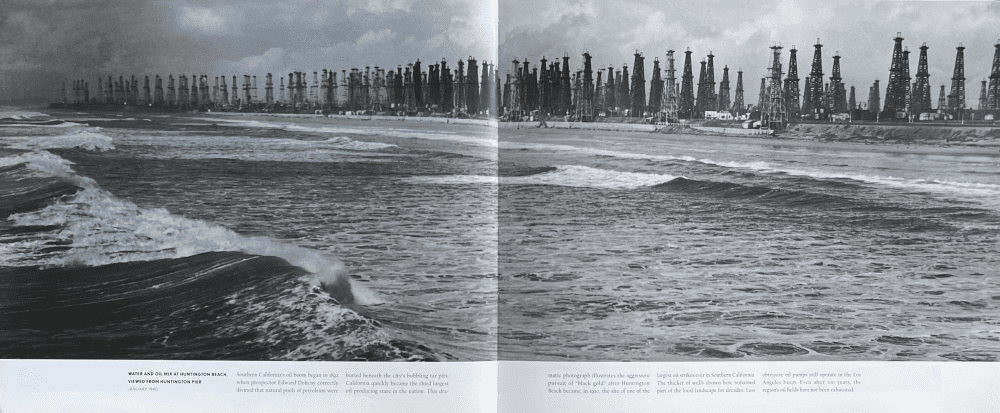
The photograph above is provided by the book “Imagining Los Angeles” via the Los Angeles Times. It illustrates the excessive pursuit of crude oil after Huntington Beach became, in the 1920s, the site of one of the largest oil strikes ever in Southern California.
Orange County Methane Ordinance
The Orange County Fire Authority prepares guidelines (Guideline C-03) about combustible methane soil gas hazard mitigation. The purpose of the document is to provide methane testing geologists with standards for the assessment, investigation, remediation, and mitigation of subsurface methane gas. The Orange County Methane Ordinance provides additional information pertaining to construction and development projects, within the limitations of the modern methane gas mitigation districts.
Other Hazard Zones and Methane Gas Districts
Additionally, some portions of Yorba Linda are similarly reported as hazard zones due to historical oil production wells. The City of Santa Fe Springs (in Los Angeles County) also regulates high methane soil gas testing zones as a result of the petroleum and landfilling activities.
How to Read the Los Angels Methane Zone Map
The City of Los Angeles establishes hazardous subsurface gas boundaries that are “Methane Buffer Zones” and “Methane Zones.” Construction projects within these areas require a Level-5 Mitigation System unless a Certified Methane Testing Los Angeles Agency determines lower levels at the site. Similarly, other government agencies apply the same mitigation standards within their respective jurisdictions. The Los Angeles Mitigation requirements can be reviewed in Ordinance No. 175790 and Ordinance No. 180619.
Methane Buffer Zones and Methane Zones are a reflection of a property’s proximity to landfills and petroleum resources. The typical root causes of natural gas in the soil are historical oil fields, oil wells, gas extraction wells, crude oil pipelines, and storage ponds, as well as natural surfacing petroleum deposits. Consequently, properties with oil wells on-site usually yield higher methane gas concentrations than others. Additionally, landfills are also common sources of methane gas hazards in shallow soil.
Finding a Qualified Methane Testing Company
Most building departments and oversight agencies refer consumers to an official roster of certified methane testing companies. Consultants require the authority of licensing agencies to conduct methane testing and design mitigation services. Agency rosters generally provide details such as laboratory license numbers, specific areas of expertise, and contact information. Additionally, these rosters include the expiration dates of laboratory licenses, allowing consumers to review this information.
Geo Forward is a Certified Methane Soil Gas Testing Laboratory & Methane Testing Company
Geo Forward is an official methane testing company, soil gas investigation, and mitigation design consultant for various oversight agencies and building departments across the nation. Methane test services include locating hazardous conditions, field drilling and constructing, periodic sampling, technical reporting, and more. Furthermore, Geo Forward subsurface assessments are fast, reliable, and include an open dialog with clients.
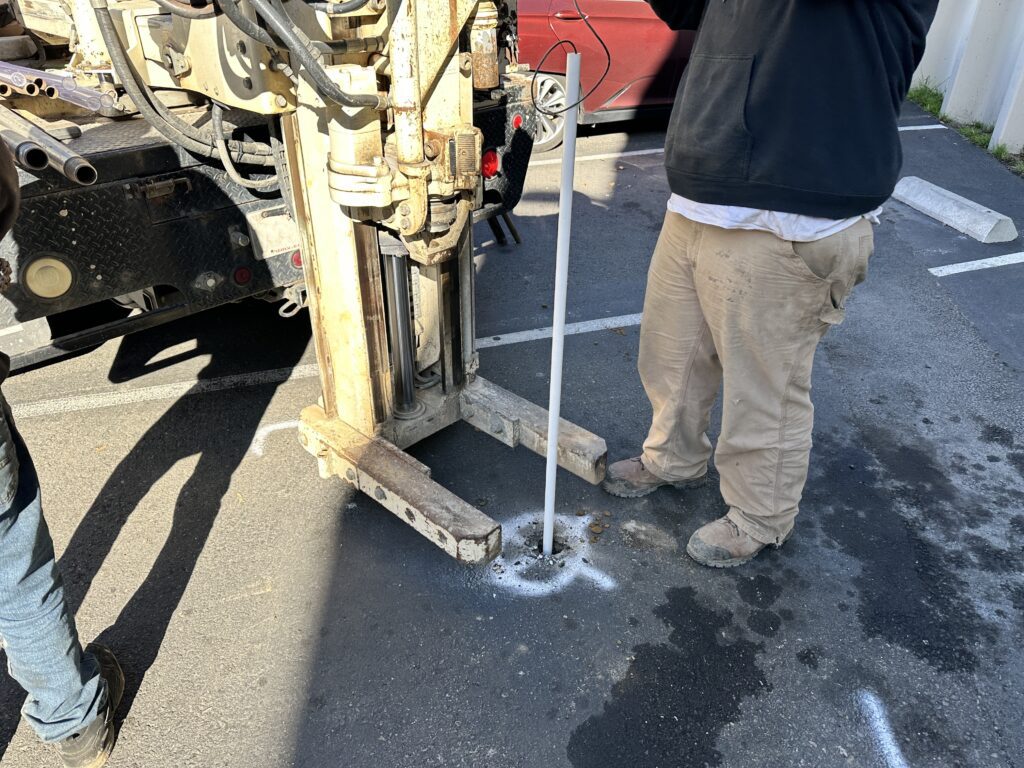
How to Test for Methane Gas in the Field
To test for methane gas underground, geologists drill and construct a series of vapor probe implants at various depths below grade, and perform a field analysis of soil gas using a flame ionization detector (FID). To start, at least two shallow soil gas probes are advanced under a property that is up to 20,000 square feet for baseline testing. Additionally, probe sets are installed per each additional 10,000 square feet of a lot. Afterward, geologists figure out the optimal locations for advancing deeper probe sets, which strategically aim for depths of 5 feet, 10 feet, and 20 feet below the proposed building footing.
Methane Survey Report Drilling
There are many facets to the fieldwork process of a methane test. At a minimum, the fieldwork comprises a geophysical survey and underground utility mark-out, to prevent damage to utility lines. Additionally, a driller with proper state licensing must advance numerous boreholes on-site, to depths ranging from 20 to 50 feet. Meanwhile, a field geologist performs site mapping, soil sampling, and soil logging in detail. And drilling equipment must undergo a decontamination process between boreholes and sites, in order to prevent any potential for cross-contamination.
Methane Soil Gas Probe Construction
A preliminary methane survey entails the installation of one shallow single-nest soil gas probe per every 10,000 square feet of land area. There is a minimum requirement of at least two shallow probe locations per site. The preliminary results from these shallow probes assist the field geologists in determining the location of the actual deeper soil gas probes for the complete methane test.
The actual methane testing survey comprises the installation of at least two triple-nest soil gas probes at nominal depths of 5 feet, 10 feet, and 20 feet below the foundation to be built. As part of the drilling process, the team constructs each soil gas probe set in accordance with ASTM, DTSC, and EPA guidelines. Additionally, backfill materials and filter pack intervals are set in accordance with regulatory methane testing standards. And probe abandonment procedures are in conformance with the permit criteria.
Soil Vapor Probe Sampling
Upon the successful calibration of laboratory analytical testing equipment, soil gas samples are collected and analyzed. Soil gas sampling procedures are in accordance with CalEPA and DTSC protocol. The Los Angeles Methane Testing Standards require multiple phases of sampling and analysis for quality assurance purposes.
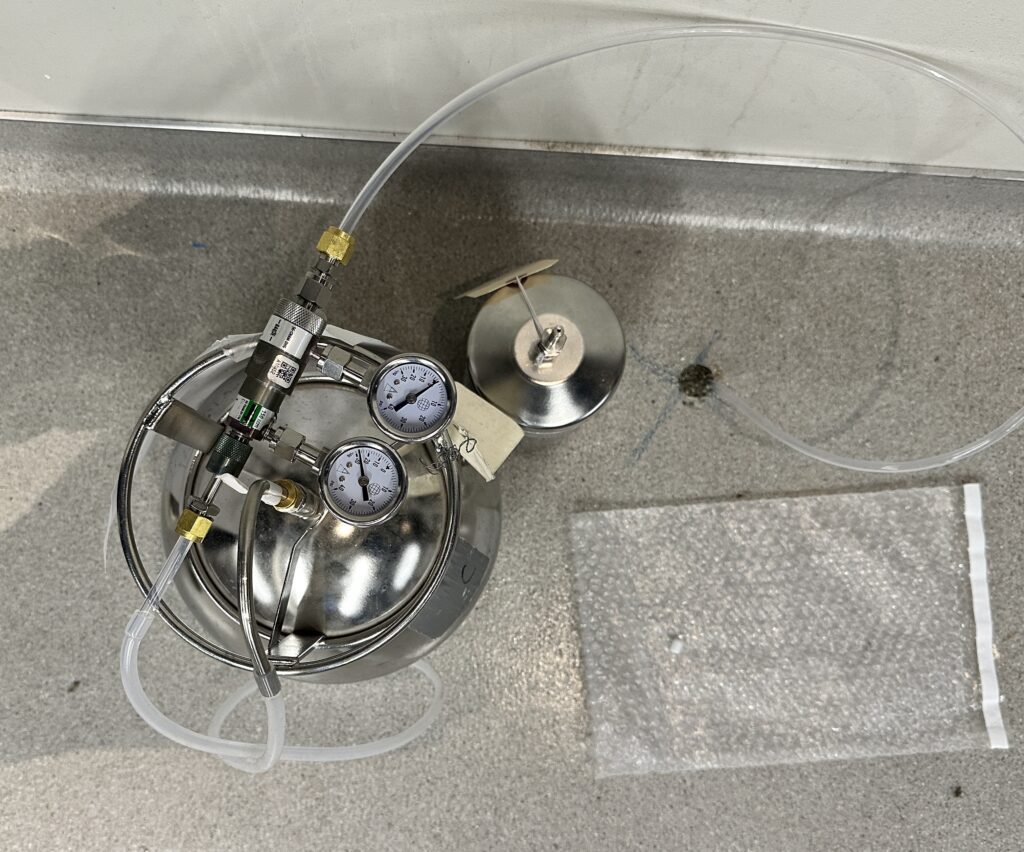
Sample Analysis per the Methane Testing Standards
At the completion of sampling, geologists analyze the methane test data in order to determine the site design level of a property. And there are a total of five possible site design levels under the current methane testing standard. This determination is necessary to determine the specifications of a methane mitigation system. For more information on how to test for methane gas underground, Geo Forward advises referring to LADBS Form IB/P/BC 2014-101 Site Testing Standards For Methane.
Reporting Methane Soil Test Results
Upon the completion of fieldwork, the site-specific data is compiled into one report. The reports provide details about the standards, methods, equipment, and findings of the test. Furthermore, the reports include informative figures and tables to visually demonstrate the data. Lastly, conclusions and recommendations are provided, along with the official stamp and certification of a geologist. Methane test reports do not include mitigation plans. Instead, they determine the necessity for a methane mitigation system altogether and also provide parameters and specifications for the mitigation plan to be designed.
Methane Mitigation Design After Methane Testing
The final certificate of compliance on a methane test reveals the design methane concentration, design methane pressure, and site design methane level. And each level entails different criteria for methane mitigation. The higher the level, the more the criteria. For instance, a slab-on-grade single-family dwelling at a Level 1 Methane Buffer Zone site may not require any methane mitigation at all. Whereas a Level 5 Methane Zone site is likely to require a complete barrier, passive ventilation system, active mechanical ventilation system, and more, in order to comply with the local Building Department. Ultimately, these criteria are in place to ensure the safety of the building occupants.
A methane mitigation system prevents methane soil gas from entering a structure. The professional service is a division of the environmental engineering industry and involves intensive planning to protect the occupants of a building. Mitigation plans are custom designs and site-specific. And methane engineers utilize architectural and structural plans, as well as the methane test report, to design their system. Moreover, mitigation plans must achieve final approval by the building department, as well as the fire department. Plan checkers make sure the system parameters are in accordance with methane test data and respective building codes.
Methane Barriers & Impervious Membranes
One of the main purposes of the methane testing process is to determine the necessity for a methane barrier and mitigation system, early on. The type of development on-site and final site design level dictates the overall requirement for a methane barrier. And depending on groundwater levels, the methane mitigation construction process may also require waterproofing and de-watering barriers.
Methane Barrier Installation
The methane barrier installation process varies for each level of methane mitigation construction. There are numerous types of materials that range in cost and functionality, and various installation methods as well. It is crucial to the success of any project, that the most economical and functional materials are being constructed. Otherwise, there could be unfavorable consequences such as a catastrophe, gross overpayment by the consumer, or even failure to pass building department inspection.
To illustrate, the application of an improper soil vapor barrier for a basement can result in the failure to mitigate the hazardous soil gas as well as the hydro-static pressures of seasonal groundwater rising. As a result, the basement level poses a combustion hazard for occupants and also experiences seasonal flooding. But if the proper methane barrier installation materials and methods are applied, the final result will be a safe living environment with no qualms by the local building department inspector.
Methane Testing Exemptions
Some existing buildings being converted into additional dwelling units may be exempt from methane testing and mitigation requirements if the existing slab remains undisturbed. Moreover, some small additions to existing buildings may also be exempt.
However, Chapter 71 of the Los Angeles City Building Code requires a methane mitigation design for all construction projects inside “Methane Buffer Zones” or “Methane Zones.” And the prerequisite Methane Testing Los Angeles Standards (LADBS Form IB/P/BC 2014-101) do not specify whether any exceptions apply for certain types of projects. Thus, Geo Forward recommends clearing all exceptions directly with a zoning code engineer at the Los Angeles Department of Building and Safety.
Professional Consultation for Methane Testing
Geo Forward is a nationwide provider of methane testing services and methane mitigation design services. The Geo Forward team meets all agency requirements, as well as developer budgets for construction. For more information or to schedule a private consultation, call (888) 930-6604. Alternatively, a consultation can be set up using Geo Forward’s virtual Pre-Consultation Questionnaire.
More Information
For more information about the methane mitigation and methane barrier construction process, please refer to the following articles: “10 Things to Know Before a Methane Test” and “What to Know About Methane Mitigation Construction.”

